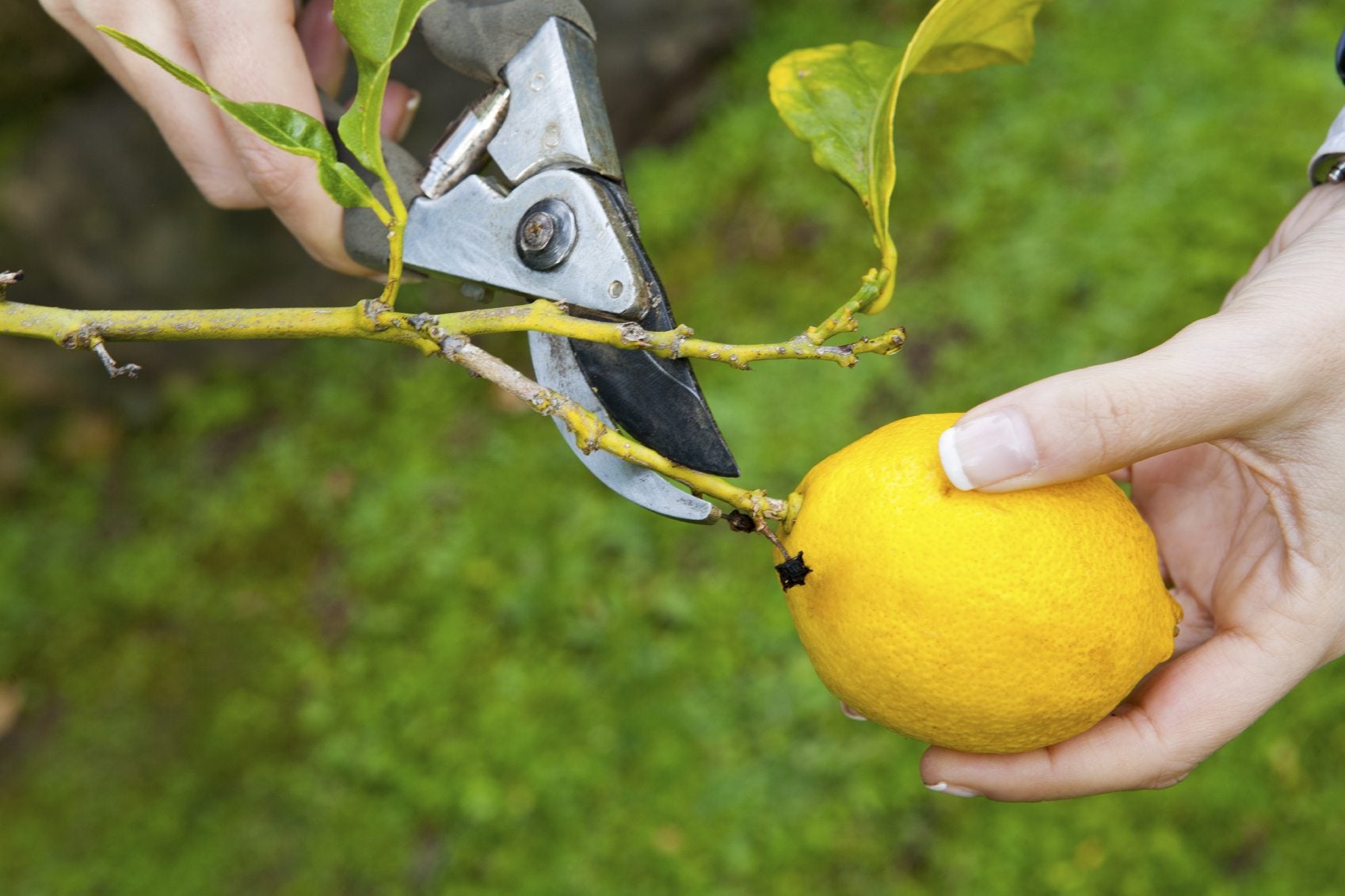How To Prune A Lemon Tree The Right Way, According To Pros
Learn how to prune a lemon tree and when to do it. It might surprise you to know that a lemon tree needs very little pruning besides maintenance.

How To Prune A Lemon Tree For More Fruit, According To Pros
We are often asked how to prune a lemon tree. Unlike deciduous fruit trees, evergreen lemon trees do not need severe pruning. That doesn’t mean you shouldn’t cut back a lemon tree at all, however. You should still prune a lemon tree, but do it judiciously. How do you trim a lemon tree? Keep reading to learn about maintaining a lemon through pruning.
Pruning Deciduous vs. Evergreen Fruit Trees
If you have experience with pruning deciduous fruit trees, don’t assume that pruning lemon trees will be the same. Unlike deciduous fruit trees, citrus wood is naturally hard and resilient and less likely to be damaged. Plus, citrus is most often grown in areas where heavy freezes and snowfall don’t cause winter injury that might need to be pruned out.
Citrus trees, including lemon trees, will produce fruit all around the tree except for the most shaded area, so they don’t need to be pruned into an open vase shape like most deciduous fruiting trees.
Citrus tends to produce just as well from an unpruned tree as a pruned tree. So any cuts you make on a lemon tree should be to remove dead or crossing branches and to remove sprouts.
When to Prune Lemon Trees
With the exception of late in the season, minor pruning of lemon trees can occur at any time of the year. If you wait until late in the season, pruning can stimulate growth that can be damaged by frost.
More major cutting back should be done in late February to March, prior to bloom time. Keep in mind that even when you can’t see the flowers, they are developing. This means that any pruning may result in a loss of bloom but unless the pruning is drastic (and generally it shouldn’t be), the loss is minimal.
How to Prune a Lemon Tree
Again, for the most part, any cutting back of a lemon tree should be nominal; just removing weakened or dead limbs, crossed branches and any suckers or water sprouts (gourmands).
Sign up for the Gardening Know How newsletter today and receive a free copy of our e-book "How to Grow Delicious Tomatoes".
The only time you should ever have to severely prune a lemon tree is with old trees that have been allowed to grow in height. This would be rare since most lemons only get from 10-15 feet (3-4.5 m) in height - still low enough to prune, albeit with a ladder. A really tall tree however,may become shaded enough at the center to thwart fruit production, so you might want to prune major branches back. Never remove more than one third of the length of a branch in this case so the tree can still photosynthesize.
General Lemon Tree Pruning
Otherwise, any trimming on a lemon tree will be simple removal as mentioned above. Fruit thinning is not necessary.
Remove weak shoots, deadwood or crossed branches with sterile pruning shears. Suckers can often be pinched off with your fingers or with shears. Water sprouts or gourmands are thick, vigorous growth that suck up nutrients but don’t produce fruit. These should be removed at the base.
Give the tree a good look from all angles. The goal is to have a large fruiting area in which the foliage canopy extends almost to the soil line.
If you plant on giving the tree a hard prune that exposes the trunk or large limbs to the sun, plant to prune in the late winter and spring which will give the tree time to grow foliage to shade the exposed wood. You can also paint a 50:50 mix of white interior latex paint and water to protect exposed branches from sunburn after pruning.
Frequently Asked Questions
Will a Lemon Tree Grow Back If Cut Down?
Lemon trees can live a long time, about 50 years. If for some reason you have had to cut the tree back to a stump, the answer is maybe. A lemon tree might grow back from a stump but it isn’t as sure a thing as if it was a willow or poplar tree.
How Do You Prune a Meyer Lemon Tree?
Prune Meyer lemon trees in the late winter to early spring. Wait until they are 3-4 years old to prune them and then remove any shoots below the graft point, any dead or crossing branches, and any suckers or water sprouts.

Amy Grant has been gardening for 30 years and writing for 15. A professional chef and caterer, Amy's area of expertise is culinary gardening.
